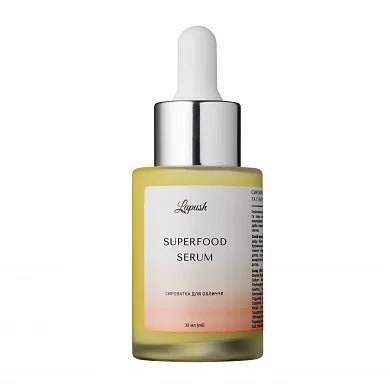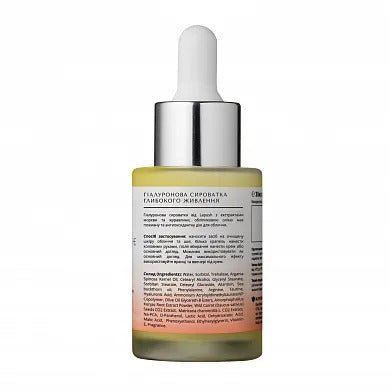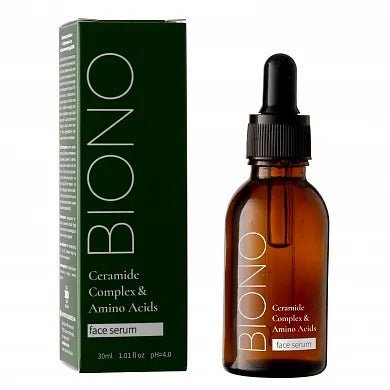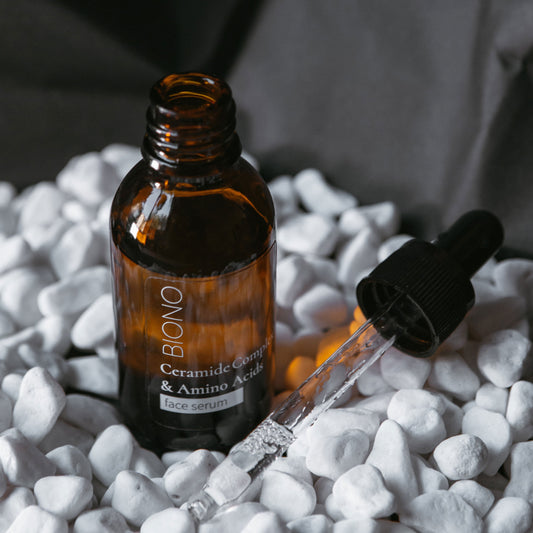
TOP 5 mistakes in using retinol: how not to harm the skin
Retinol has long been the “gold standard” in skin care: it stimulates cell renewal, fights wrinkles, rashes and pigmentation. But despite all its effectiveness, this component requires the right approach. One careless application - and instead of radiance you get irritation, dryness and a long recovery period. That is why it is important to know about the most common mistakes when using retinol in order to avoid unpleasant consequences and achieve maximum effect.
The use of retinol in cosmetology
Retinol is one of the most well-known and effective ingredients in modern cosmetology. It is a derivative of vitamin A and has long earned a reputation as a real "corrector" of the skin: it smoothes wrinkles, reduces acne, evens out tone and texture, and stimulates cell renewal. Due to these properties, retinol products are actively used both in professional procedures and in home care.
In cosmetology, retinol is especially appreciated for its ability to penetrate deep into the skin, affecting cellular processes. It is added to serums, creams, emulsions and even masks. But with all its benefits, retinol has one feature - it must be used correctly. Otherwise, even the best remedy can cause irritation, dryness or pigmentation.
That's why, before you start using it, it's worth understanding how retinol works, what it can be combined with, and what mistakes to avoid. Next, let's look at the 5 most common mistakes that even experienced users of retinol skincare products make.

What does retinol do for the face?
Retinol for the face is one of the most effective ingredients in cosmetology, which has a wide range of effects. It stimulates cell renewal, accelerates skin regeneration and improves its overall condition. It is thanks to these properties that retinol is actively used to combat wrinkles, acne, pigmentation and dull complexion.
Regular use of products with retinol helps reduce the appearance of age-related changes: fine wrinkles are gradually smoothed, skin elasticity improves, and collagen production is activated. In addition, retinol effectively cleanses pores and regulates sebum production, which is especially important for oily and problematic skin. It also helps reduce rashes and prevents their reappearance.
Another benefit of retinol is its ability to lighten age spots, acne scars, and uneven skin tone. This makes your face look smoother, healthier, and more radiant. Retinol really works, but only when used correctly — with a gradual introduction to your skincare routine and daily SPF protection.
Start with a high concentration of retinol
One of the most common mistakes when using retinol for the face is the desire to start with the maximum concentration in the hope of seeing the effect in a few days. This especially often happens after positive reviews or recommendations on social media. It seems that if the ingredient is so powerful, then it is worth taking the “strongest” option right away. But this strategy only harms the skin, especially if it is not yet familiar with vitamin A.
Retinol is an active ingredient that affects cellular metabolism, so incorrect dosage or starting too quickly can lead to unpleasant reactions. Among the most typical are excessive dryness, peeling, redness, irritation, and sometimes even inflammation. Concentrations of 0.5% or 1% are recommended only for those whose skin is already adapted to retinoids. For beginners and sensitive skin, retinol in a concentration of 0.2% or even 0.1% will be ideal, which allows you to gradually get used to the action of this ingredient without stress for the epidermis.
It is important to understand that even low doses of retinol can give excellent results - if used regularly and with proper accompanying care. Cosmetologists emphasize: retinol is a marathon, not a sprint. A gradual increase in the frequency of use and concentration gives the skin time to adapt and allows you to avoid side effects. That is why effective care with retinol begins not with strength, but with understanding and patience.
Ignore the use of SPF protection
Retinol for the face is a great helper in the fight against wrinkles, acne and pigmentation, but its use requires special caution. One of the most common and dangerous mistakes is neglecting sunscreen in daily care. The fact is that retinol makes the skin much more sensitive to ultraviolet radiation, because a thinner stratum corneum and accelerated cell renewal reduce its natural protection.
Even a short exposure to the sun after applying retinol in the evening can lead to age spots, irritation or accelerated photoaging. That is, instead of a rejuvenating effect, the skin can become even more vulnerable. And this is not just about hot summer - ultraviolet is active at any time of the year, even on cloudy days. That is why sunscreen with an SPF factor of 30 or higher should be an integral part of the morning ritual.
When combined with retinol, SPF is not just a welcome bonus, but a must. Only with daily sun protection can retinol work for your skin without causing negative reactions. This approach allows you to fully enjoy the effects of retinoids — renewal, radiance, and even skin tone — without the risk of complications and adverse effects. If you're serious about retinol, sunscreen should be your must-have.
Apply retinol to damp skin
Another common mistake when using retinol on your face is applying it to damp or not-yet-dried skin after washing it. Many people believe that active ingredients are better absorbed in a moist environment. This is true for moisturizing ingredients like hyaluronic acid, but not for retinoids. Retinol penetrates deeper than necessary in a moist environment, which often causes irritation, itching, or even redness.
The skin after washing is especially vulnerable: its protective barrier has not yet been restored, and the pores remain open. These are ideal conditions for deeper penetration of the active ingredient, but this is not always desirable. For retinol, it is important to control the depth of its effect, especially at the start of use. That is why cosmetologists recommend letting the skin dry naturally or gently blotting it with a clean towel, and after 5–10 minutes applying the product.
This small but crucial change in your beauty routine can significantly improve your skin's adaptation to retinol. Less irritation means more comfort. This is especially true for sensitive, dry or reactive skin, which can react negatively to even the highest-quality formulas if used incorrectly. Remember: the effectiveness of retinol directly depends not only on its composition, but also on the conditions of application.
Combine retinol with acids without a system
Retinol and acids are two big players in the world of skincare. Retinol stimulates cell turnover and fights signs of aging, while AHA and BHA acids (such as glycolic, salicylic, and lactic) exfoliate dead skin cells, unclog pores, and refine skin texture. At first glance, it seems like the combination of these ingredients will provide a powerful, comprehensive effect. But in practice, this is one of the most dangerous mistakes.
Using retinol and acids together in one treatment often leads to irritation, severe peeling, a burning sensation, and even damage to the hydrolipidic barrier. This is especially risky for beginners or people with sensitive skin. Excessive loading of active ingredients does not give the skin time to recover, and the result may not be improvements, but new problems - dryness, inflammation, redness.
The right approach is to alternate: for example, retinol 2-3 times a week in the evening care, and an acid tonic or peeling - on days when retinoids are not used. On "free" days from active ingredients, it is important to support the skin with hydration and barrier restorative agents - for example, creams with ceramides or panthenol. Combining retinol with acids is already a level of advanced care, and it is better to coordinate it with a cosmetologist or dermatologist. The skin needs balance, not a race for an instant effect.
Apply retinol daily from the first week
One of the most dangerous mistakes when starting with retinol is to immediately start using it every day. Retinol for the face is an active ingredient that works slowly but deeply. Its effect accumulates over time, affecting cellular processes and skin renewal. But instead of the expected effect of renewal, you can get the opposite - irritation, peeling, a feeling of tightness or even inflammation. Dry, reactive or thin skin is especially vulnerable in this case.
The initial stage of adaptation to retinol is an essential part of proper care. Beauticians advise starting with a frequency of 1–2 times a week in the evening care, observing the skin's reaction. If there are no negative manifestations within 2–3 weeks, you can gradually increase the number of applications to 3–4 times a week. Sometimes this is enough to achieve a stable result - especially if you use a product with a medium or high concentration of retinol.
The key to effective and safe use of retinol is not frequency, but regularity and gradualness. Retinol does not work instantly, but with the right regimen, it gives lasting results: smooth, elastic, renewed skin without irritation. Therefore, it is better to start slowly and carefully than to deal with the consequences of haste. Skin really appreciates careful treatment - and with retinol, this rule is especially relevant.
Conclusion: How to Get the Most out of Retinol
Retinol is an effective ally in the fight against wrinkles, acne, and dull skin tone. But only if used correctly. Mistakes at the beginning can ruin first impressions and even undermine trust in this powerful ingredient.
Start with low concentrations, apply only to dry skin, don't forget about daily SPF, and rotate active ingredients. And most importantly, listen to your skin. It will always tell you when it's comfortable and when it's time to take a break.
Proper use of retinol is not only about beauty, but also about taking care of skin health. And it is in the details that true effectiveness lies.


















